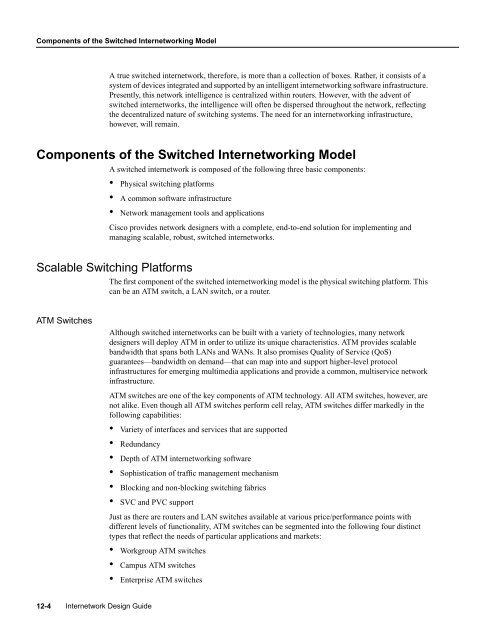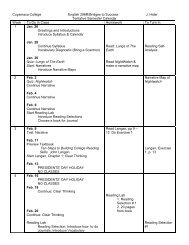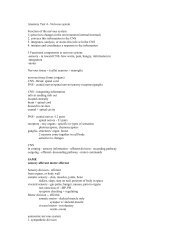Designing Switched LAN Internetworks
Designing Switched LAN Internetworks
Designing Switched LAN Internetworks
Create successful ePaper yourself
Turn your PDF publications into a flip-book with our unique Google optimized e-Paper software.
Components of the <strong>Switched</strong> Internetworking ModelA true switched internetwork, therefore, is more than a collection of boxes. Rather, it consists of asystem of devices integrated and supported by an intelligent internetworking software infrastructure.Presently, this network intelligence is centralized within routers. However, with the advent ofswitched internetworks, the intelligence will often be dispersed throughout the network, reflectingthe decentralized nature of switching systems. The need for an internetworking infrastructure,however, will remain.Components of the <strong>Switched</strong> Internetworking ModelA switched internetwork is composed of the following three basic components:• Physical switching platforms• A common software infrastructure• Network management tools and applicationsCisco provides network designers with a complete, end-to-end solution for implementing andmanaging scalable, robust, switched internetworks.Scalable Switching PlatformsThe first component of the switched internetworking model is the physical switching platform. Thiscan be an ATM switch, a <strong>LAN</strong> switch, or a router.ATM SwitchesAlthough switched internetworks can be built with a variety of technologies, many networkdesigners will deploy ATM in order to utilize its unique characteristics. ATM provides scalablebandwidth that spans both <strong>LAN</strong>s and WANs. It also promises Quality of Service (QoS)guarantees—bandwidth on demand—that can map into and support higher-level protocolinfrastructures for emerging multimedia applications and provide a common, multiservice networkinfrastructure.ATM switches are one of the key components of ATM technology. All ATM switches, however, arenot alike. Even though all ATM switches perform cell relay, ATM switches differ markedly in thefollowing capabilities:• Variety of interfaces and services that are supported• Redundancy• Depth of ATM internetworking software• Sophistication of traffic management mechanism• Blocking and non-blocking switching fabrics• SVC and PVC supportJust as there are routers and <strong>LAN</strong> switches available at various price/performance points withdifferent levels of functionality, ATM switches can be segmented into the following four distincttypes that reflect the needs of particular applications and markets:• Workgroup ATM switches• Campus ATM switches• Enterprise ATM switches12-4Internetwork Design Guide
















